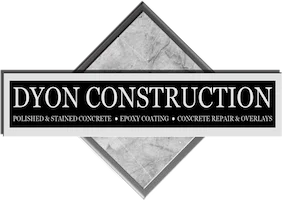Introduction
Embarking on the journey of designing custom concrete applications opens a realm of possibilities for creating unique, functional, and aesthetically pleasing spaces. From personalized countertops to intricate floor designs, the versatility of concrete offers endless opportunities for customization. In this guide, we delve into the key considerations and expert tips to help you navigate the process of designing custom concrete applications with confidence and creativity.
Understanding Your Needs
Before diving into the design phase, take time to assess and understand your specific needs and requirements. Consider factors such as the intended use of the space, desired aesthetics, budget constraints, and any special considerations such as durability or maintenance requirements. By clarifying your objectives and priorities upfront, you can ensure that the final design aligns seamlessly with your vision and practical needs.
Understanding your needs is not only about identifying the purpose of the space but also about envisioning how you want it to look and feel. Are you aiming for a sleek and modern aesthetic, or do you prefer a more rustic and textured finish? Do you need the concrete to withstand heavy foot traffic or harsh environmental conditions? These are all essential questions to consider during the planning phase.
Exploring Design Options
With a clear understanding of your needs, it’s time to explore the myriad design options available for custom concrete applications. From sleek and modern finishes to rustic and textured surfaces, concrete offers versatility in both style and functionality. Consider experimenting with different colors, aggregates, and decorative techniques to achieve the desired look and feel for your project. Don’t be afraid to think outside the box and push the boundaries of conventional design to create something truly unique and distinctive.
When exploring design options, it’s essential to keep an open mind and draw inspiration from various sources. Look for design trends in architecture, interior design, and art that resonate with your aesthetic preferences. Visit showrooms, browse online galleries, and consult with design professionals to gather ideas and inspiration for your custom concrete project.
Choosing the Right Materials
Selecting the right materials is crucial to the success of any custom concrete project. Consider factors such as the type of concrete mix, reinforcing materials, and surface finishes based on the specific requirements of your application. For example, high-performance concrete may be necessary for outdoor applications exposed to harsh weather conditions, while decorative aggregates can add visual interest to indoor surfaces. Work closely with your contractor or designer to choose materials that strike the perfect balance between aesthetics, durability, and functionality.
When choosing materials, it’s essential to consider not only the visual appearance but also the performance characteristics of each option. For example, if you’re designing a kitchen countertop, you’ll need a concrete mix that is resistant to stains, scratches, and heat. Similarly, if you’re designing an outdoor patio, you’ll want a concrete mix that can withstand freeze-thaw cycles and UV exposure without deteriorating.
Working with a Professional
Collaborating with a professional contractor or designer is essential for bringing your custom concrete vision to life. Look for experienced professionals with a proven track record of delivering high-quality custom concrete projects. A skilled contractor will not only provide expert guidance and technical expertise but also offer valuable insights and recommendations to enhance your design concept. Communication is key throughout the process, so be sure to articulate your vision clearly and collaborate closely with your chosen professional to achieve the desired results.
Working with a professional also allows you to leverage their industry connections and access to specialized tools and equipment. They can help you navigate the complexities of the design and construction process, ensuring that your project stays on track and within budget. Additionally, a professional contractor will be familiar with local building codes and regulations, ensuring that your custom concrete project meets all necessary requirements.
Examples of Custom Concrete Applications
To inspire your design journey, here are a few examples of custom concrete applications that showcase the versatility and creativity of this material:
- Custom concrete countertops with integrated sinks and unique edge details
- Artistic concrete floor designs featuring intricate patterns and decorative inlays
- Custom concrete furniture pieces such as tables, benches, and seating
- Architectural elements like fireplace surrounds, feature walls, and staircases crafted from concrete
Conclusion
Designing custom concrete applications is a rewarding process that allows you to create truly one-of-a-kind spaces tailored to your unique style and preferences. By understanding your needs, exploring design options, choosing the right materials, and working with a professional, you can bring your vision to life with confidence and creativity. With the versatility of concrete as your canvas, the possibilities for customization are endless, ensuring that your custom concrete project stands out as a true expression of your individuality and taste.
As you embark on your custom concrete design journey, remember to approach the process with an open mind and a spirit of experimentation. Don’t be afraid to push the boundaries of conventional design and explore new ideas and techniques. With careful planning, attention to detail, and a dash of creativity, you can create custom concrete applications that elevate your space and leave a lasting impression.

